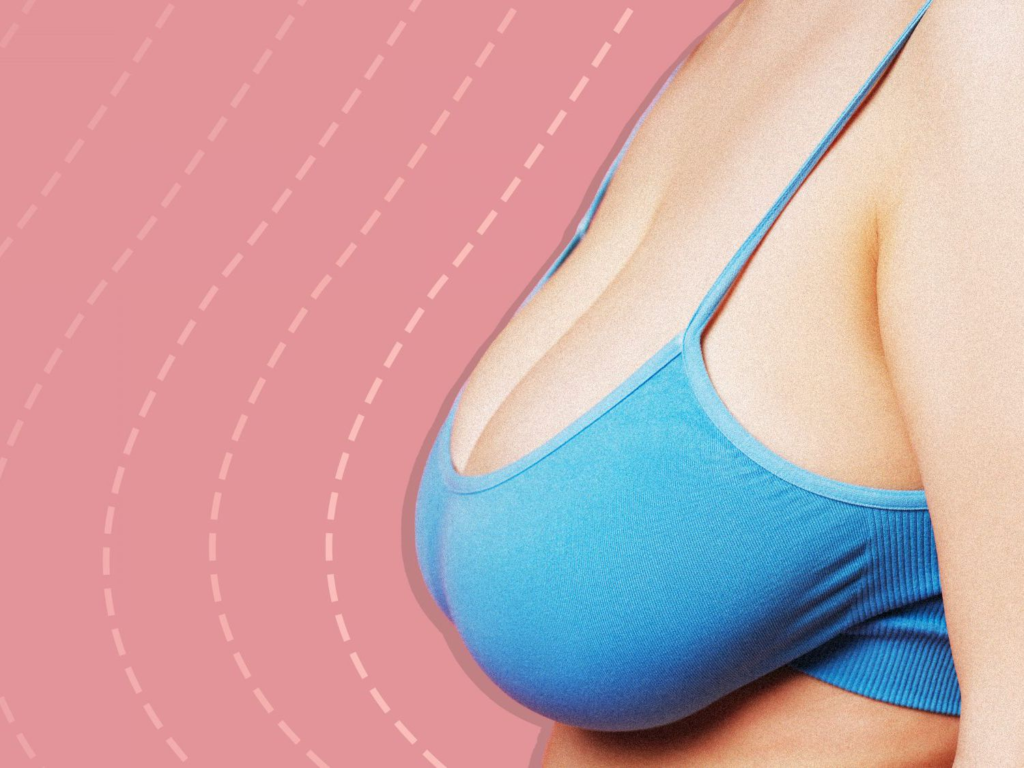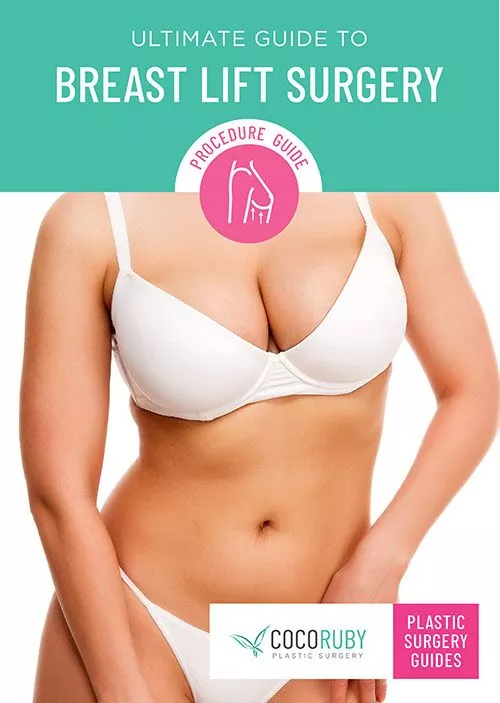Breast reduction surgery, also known as reduction mammoplasty, is a surgical procedure designed to reduce the size and volume of the breasts. It is a popular choice for women who experience physical discomfort or emotional distress due to overly large breasts. While breast reduction can provide numerous benefits and improve quality of life, it is natural to have concerns and questions before considering such a procedure. In this article, we will address some common queries about breast reduction, including the potential regrets, downsides, and recovery process.
Does Anyone Ever Regret a Breast Reduction?
Breast reduction is a personal decision that should be carefully considered in consultation with a qualified plastic surgeon. While the majority of women who undergo breast reduction are highly satisfied with the results, it is possible for some individuals to experience regret or dissatisfaction. Factors contributing to regret may include unrealistic expectations, poor surgical outcomes, or complications during the recovery period.
It is crucial to have a thorough discussion with your surgeon to ensure that you have a clear understanding of the potential outcomes, including both the benefits and risks. Additionally, it is recommended to seek the guidance of a mental health professional if you have concerns about body image or are unsure about your decision.
What is the Downside of Breast Reduction?
Like any surgical procedure, breast reduction carries some risks and potential downsides. It is important to be aware of these factors before making a decision. Here are some common downsides associated with breast reduction:
- Scarring: Breast reduction surgery involves incisions, which can result in scars. However, skilled surgeons make every effort to minimize scarring and place the incisions strategically, usually around the areola and along the natural breast crease.
- Temporary changes in nipple sensation: Following the surgery, some women may experience temporary changes in nipple sensation. This typically resolves within a few weeks or months, but in rare cases, it may persist for a longer duration.
- Inability to breastfeed: While it is possible to breastfeed after breast reduction, the procedure may affect milk production and the ability to breastfeed exclusively. If you have plans for breastfeeding in the future, it is essential to discuss this concern with your surgeon.
- Potential for uneven results: Achieving symmetry in breast reduction surgery can be challenging. In some cases, slight asymmetry may persist even after the procedure. However, an experienced surgeon will strive to create the most symmetrical and aesthetically pleasing outcome possible.
- Surgical risks: As with any surgical procedure, breast reduction carries inherent risks such as infection, bleeding, adverse reactions to anesthesia, and poor wound healing. These risks can be minimized by choosing a skilled and reputable surgeon and following post-operative care instructions diligently.
It is important to remember that while these downsides exist, the benefits of breast reduction often outweigh the potential risks for those who experience physical discomfort or emotional distress due to large breasts.

Will Breast Reduction Make Me Look Thinner?
Breast reduction surgery can indeed create the illusion of a slimmer and more proportionate body. By removing excess breast tissue and reshaping the breasts, the procedure can bring balance to your overall figure and make you feel more comfortable in your skin.
However, it is crucial to have realistic expectations. Breast reduction primarily focuses on reducing breast size, and its impact on overall body weight may be minimal. Weight loss and body composition changes are best achieved through a combination of healthy eating, exercise, and lifestyle modifications.
Can You Breastfeed After a Breast Reduction?
Breastfeeding after a breast reduction is possible but can be challenging for some women. The ability to breastfeed successfully following the surgery depends on various factors, including the technique used, the extent of tissue removal, and individual factors such as nipple sensation and milk production.
It is important to discuss your desire to breastfeed in the future with your surgeon during the consultation. They can provide you with personalized information based on your specific situation and advise you on the potential impact of breast reduction on breastfeeding.
Is it OK to Get Pregnant After Breast Reduction?
Yes, it is generally safe to get pregnant after breast reduction surgery. However, pregnancy and breastfeeding can affect the results of the procedure. It is recommended to delay breast reduction surgery until after completing your family if you are planning to have children in the near future.
During pregnancy, hormonal changes and weight gain can cause the breasts to enlarge, potentially altering the results achieved through breast reduction. Similarly, breastfeeding can also impact the shape and size of the breasts. It is best to consult with your surgeon to determine the ideal timing for breast reduction in relation to your family planning goals.
How Long Does it Take for Breasts to Fully Heal After Breast Reduction?
The complete healing process after breast reduction varies from person to person. In general, it takes several weeks to a few months for the breasts to fully heal and settle into their new shape. During this time, it is normal to experience some swelling, bruising, and discomfort.
Your surgeon will provide you with specific post-operative care instructions to promote optimal healing. It is crucial to follow these instructions closely, including wearing a supportive bra, avoiding strenuous activities, and attending follow-up appointments.
What Happens If I Do Too Much After Breast Reduction?
Engaging in strenuous activities or not following post-operative care instructions can hinder the healing process and potentially lead to complications. It is essential to give your body adequate time to recover and avoid overexertion.
Doing too much too soon after breast reduction can increase the risk of bleeding, infection, wound healing problems, and compromised surgical outcomes. It is important to listen to your body, follow your surgeon’s recommendations, and gradually ease back into your regular routine as advised.
When Can I Wear Normal Clothes After Breast Reduction?
The timeline for wearing normal clothes after breast reduction varies depending on individual healing progress. In general, you can expect to gradually transition to regular clothing within a few weeks after the surgery.
Initially, you will need to wear a supportive surgical bra or compression garment to provide stability and aid in the healing process. Your surgeon will guide you on when it is appropriate to transition to a regular bra and gradually reintroduce different clothing styles.
It is crucial to prioritize comfort and support during the healing period. Avoid wearing tight or restrictive clothing that may impede circulation or put undue pressure on the surgical incisions.

Do Breast Reduction Scars Go Away?
One of the primary concerns for individuals considering breast reduction surgery is the appearance of scars. While it’s true that breast reduction surgery does result in scars, the good news is that they tend to fade over time. Initially, the scars may be red or pink and slightly raised. However, with proper care and the passage of time, they usually become less noticeable and blend in with the surrounding skin. It’s important to follow the post-operative care instructions provided by your surgeon to ensure optimal healing and minimize the visibility of scars.
Should I Get a Breast Reduction Before or After Breastfeeding?
A common dilemma for women considering breast reduction surgery is whether to undergo the procedure before or after breastfeeding. While it’s possible to have a breast reduction before having children, it’s generally recommended to wait until you have finished breastfeeding. The reason behind this recommendation is that pregnancy and breastfeeding can significantly impact the size and shape of your breasts. By waiting until after you have completed your breastfeeding journey, you give your breasts a chance to stabilize in size, which allows your surgeon to achieve better and longer-lasting results.
Will Breasts Sag After Breast Reduction?
Another concern that women often have is whether their breasts will sag after undergoing a breast reduction. The goal of breast reduction surgery is not only to reduce the size of the breasts but also to lift and reshape them. During the procedure, excess skin and tissue are removed, and the remaining breast tissue is repositioned to create a more youthful and lifted appearance. While it’s natural for the breasts to experience some degree of sagging as part of the natural aging process, a well-performed breast reduction surgery can provide long-term improvement and delay the onset of sagging.

Why Do I Look Flat Chested After a Breast Reduction?
Some women may notice that their breasts appear flatter or smaller than they expected after a breast reduction. This temporary flattening of the breasts is often a result of post-operative swelling and the fact that the breast tissue needs time to settle into its new position. As the swelling subsides and the breasts heal, they will gradually regain their natural shape and volume. It’s important to have realistic expectations and remember that the final results of a breast reduction become more apparent as the healing process progresses.
What Happens If I Do Too Much After Breast Reduction?
After undergoing breast reduction surgery, it’s essential to allow your body sufficient time to heal and recover. Engaging in strenuous activities or overexertion too soon can potentially jeopardize the healing process and lead to complications. It’s crucial to follow your surgeon’s guidelines regarding post-operative care and gradually increase your activity level as recommended. Doing too much too soon can increase the risk of bleeding, swelling, and delayed healing. Be patient and prioritize your recovery to achieve the best possible outcome.
When Can You Sleep on Your Stomach After a Breast Reduction?
Sleeping comfortably after breast reduction surgery may require some adjustments in your usual sleeping position. Initially, it’s recommended to sleep on your back with a few pillows to support your upper body and minimize strain on your incisions. As the healing progresses, you will gradually be able to transition to side sleeping. Stomach sleeping, however, should be avoided for at least a few weeks to allow for proper healing and reduce the risk of putting pressure on your breasts.
What Should I Avoid After Breast Reduction Surgery?
To ensure a smooth recovery and optimal results, there are certain activities and habits you should avoid after breast reduction surgery. These include:
- Strenuous exercise or heavy lifting: Avoid activities that strain your chest muscles for at least four to six weeks.
- Smoking and alcohol consumption: Both smoking and excessive alcohol can hinder the healing process and increase the risk of complications. It’s best to refrain from these habits during your recovery period.
- Sleeping without a surgical bra: Your surgeon will provide specific instructions regarding the use of a surgical bra. It’s important to wear it as recommended to provide support and promote proper healing.
- Exposing your incisions to direct sunlight: Protect your incisions from direct sunlight to prevent hyperpigmentation and facilitate scar healing. Apply sunscreen or cover the area with clothing when you go outside.

Can I Sleep Without My Surgical Bra?
The surgical bra provided by your surgeon plays a vital role in supporting your breasts and promoting proper healing after breast reduction surgery. It’s recommended to wear the surgical bra as instructed, especially during the initial phase of your recovery. This helps minimize swelling, reduce movement, and provide support to your breasts. As you progress in your recovery, your surgeon will guide you on when it’s safe to transition to a regular bra.
How Long After Breast Reduction Will I Know My Size?
The size of your breasts after reduction surgery may not be immediately apparent. It takes time for the swelling to subside and for the breasts to settle into their new shape and size. The final results of your breast reduction can take several months to manifest fully. It’s essential to be patient during the healing process and follow up with your surgeon for regular check-ups. They will assess your progress and address any concerns you may have regarding the size or appearance of your breasts.
What Is the Best Size for a Breast Reduction?
Determining the ideal size for your breast reduction is a highly personal decision and requires careful consideration. Your surgeon will work closely with you to understand your goals and expectations. They will consider factors such as your body proportions, breast symmetry, and overall aesthetic balance when determining the appropriate size for your breast reduction. It’s important to communicate openly with your surgeon and express your desires to ensure you achieve a result that aligns with your vision.
Will I Still Feel My Nipples After Breast Reduction?
Breast reduction surgery typically involves repositioning the nipples to a higher position on the breast mound. While the sensation in your nipples may be temporarily altered after surgery, it often returns to normal as the nerves regenerate during the healing process. In some cases, there may be mild changes in nipple sensation, such as increased or decreased sensitivity. However, complete loss of nipple sensation is rare. It’s important to discuss any concerns about nipple sensation with your surgeon during your pre-operative consultations.
Frequently Asked Questions (FAQs)
FAQ 1: Can breast reduction affect my ability to exercise?
No, breast reduction surgery should not significantly impact your ability to exercise. However, it is important to avoid strenuous activities and heavy lifting during the initial healing period. Your surgeon will provide specific guidelines regarding when you can gradually resume exercise and engage in physical activities.
FAQ 2: Will my insurance cover the cost of breast reduction?
In some cases, health insurance may cover the cost of breast reduction if it is deemed medically necessary. This typically requires documentation of physical symptoms and attempts at non-surgical remedies. It is advisable to check with your insurance provider and consult with your surgeon to determine if you meet the necessary criteria for coverage.
FAQ 3: Can breast reduction improve my posture?
Yes, breast reduction can improve your posture by reducing the weight and strain on your upper body. Many women with large breasts experience back, neck, and shoulder pain, which can be alleviated through the removal of excess breast tissue.
FAQ 4: Will my breasts be completely symmetrical after breast reduction?
While every effort is made to achieve symmetry, it is important to understand that absolute symmetry may not be attainable. Minor differences in breast size, shape, or nipple position may persist even after breast reduction. However, an experienced surgeon will strive to create the most balanced and aesthetically pleasing result possible.
FAQ 5: How long do the results of breast reduction typically last?
The results of breast reduction are generally long-lasting. However, factors such as pregnancy, weight fluctuations, and the natural aging process can impact the shape and size of the breasts over time. Maintaining a stable weight and a healthy lifestyle can help prolong the longevity of the results.
FAQ 6: Are there any alternative options to breast reduction?
If you are considering breast reduction but are unsure about undergoing surgery, there are non-surgical alternatives available. These options include wearing supportive bras, using physical therapy techniques to manage discomfort, and exploring weight loss strategies to reduce breast volume. However, it is important to consult with a qualified healthcare professional to determine the most suitable approach for your specific situation.
Conclusion
Breast reduction surgery can be a life-changing procedure for individuals who experience physical discomfort or emotional distress due to excessively large breasts. While there are potential downsides and risks associated with the surgery, the majority of women who undergo breast reduction are highly satisfied with the results. By addressing your concerns, setting realistic expectations, and selecting a skilled surgeon, you can increase the likelihood of a successful outcome. Remember to consult with a qualified plastic surgeon to discuss your individual circumstances and determine if breast reduction is the right choice for you.
